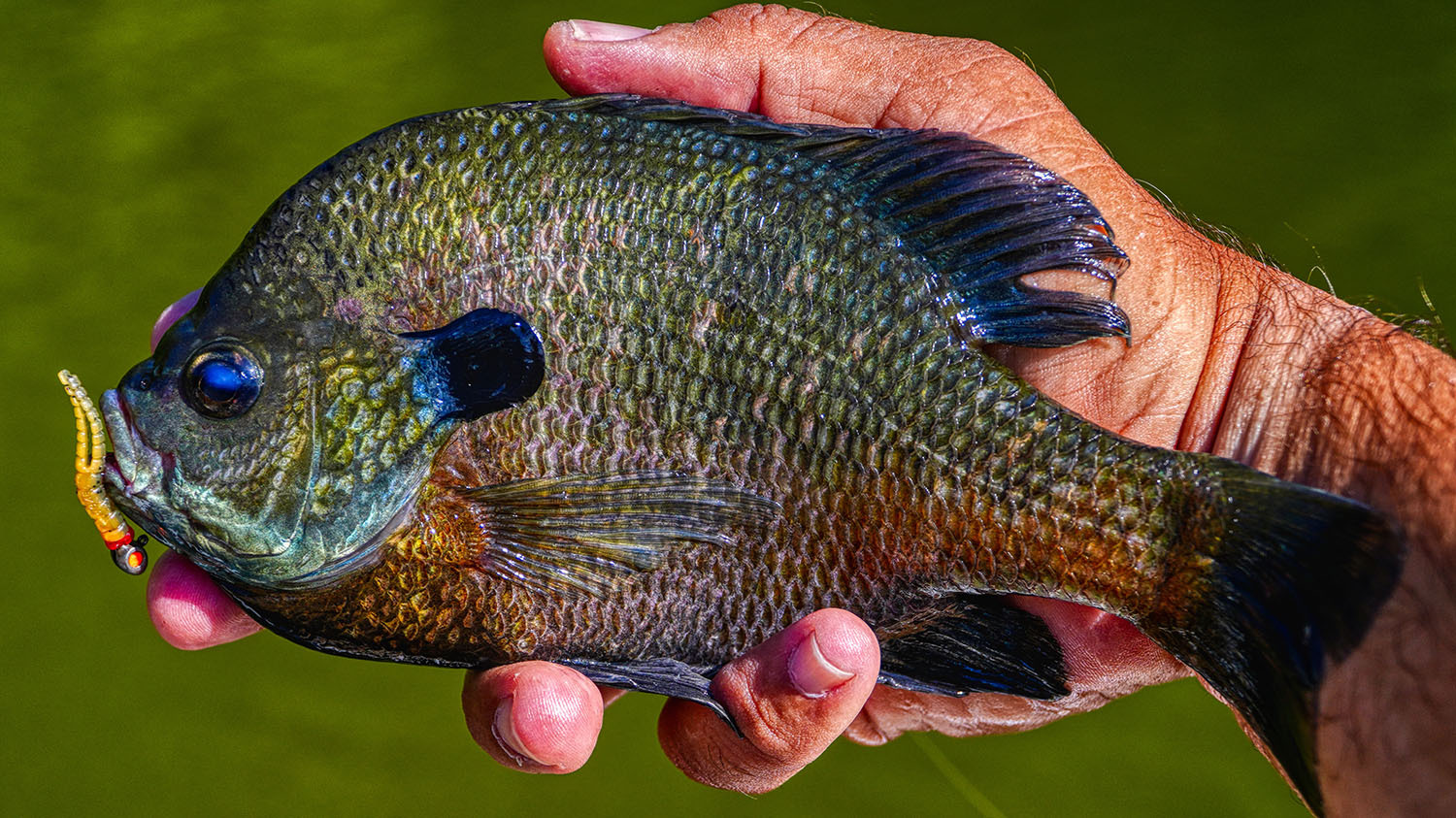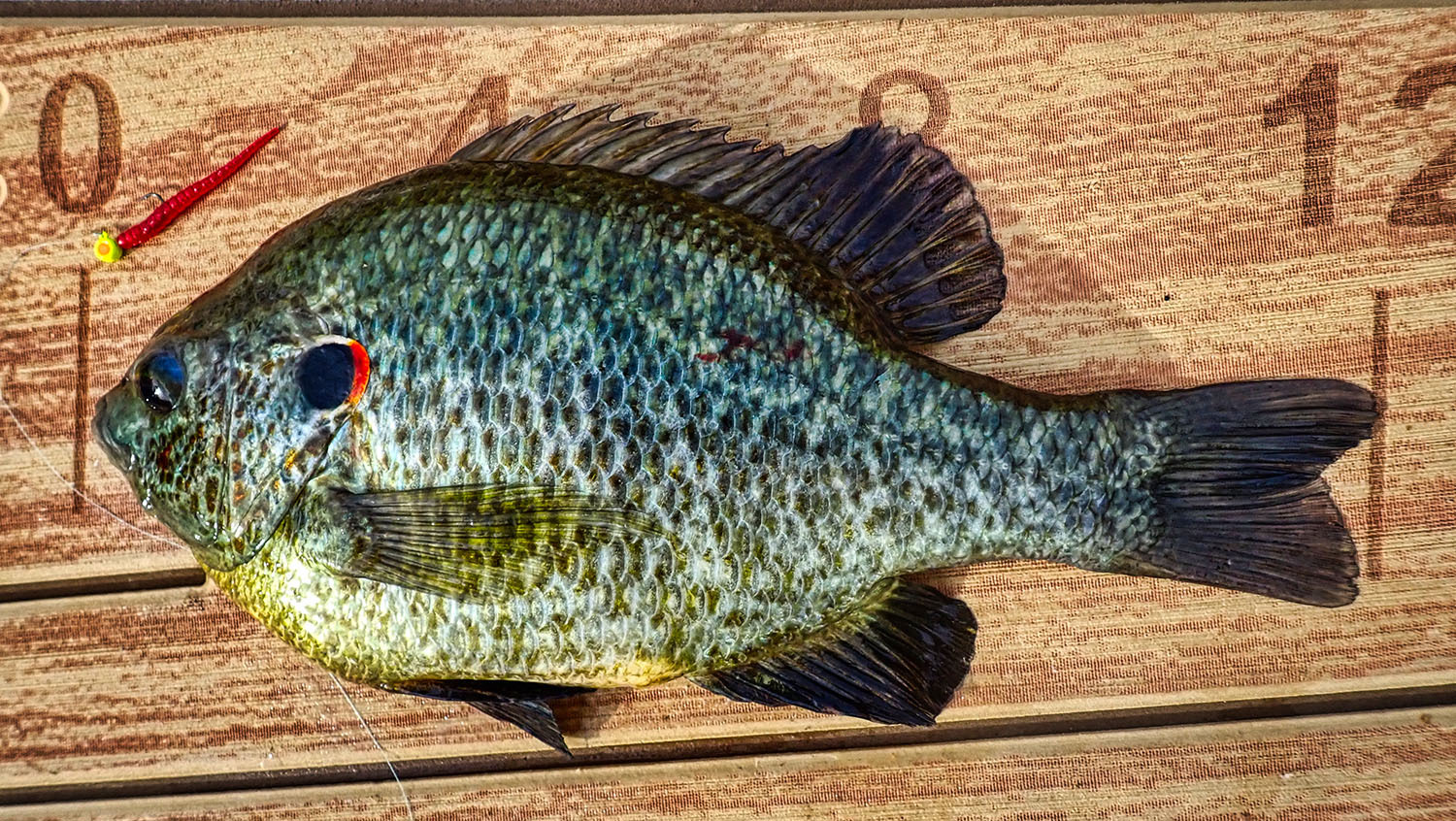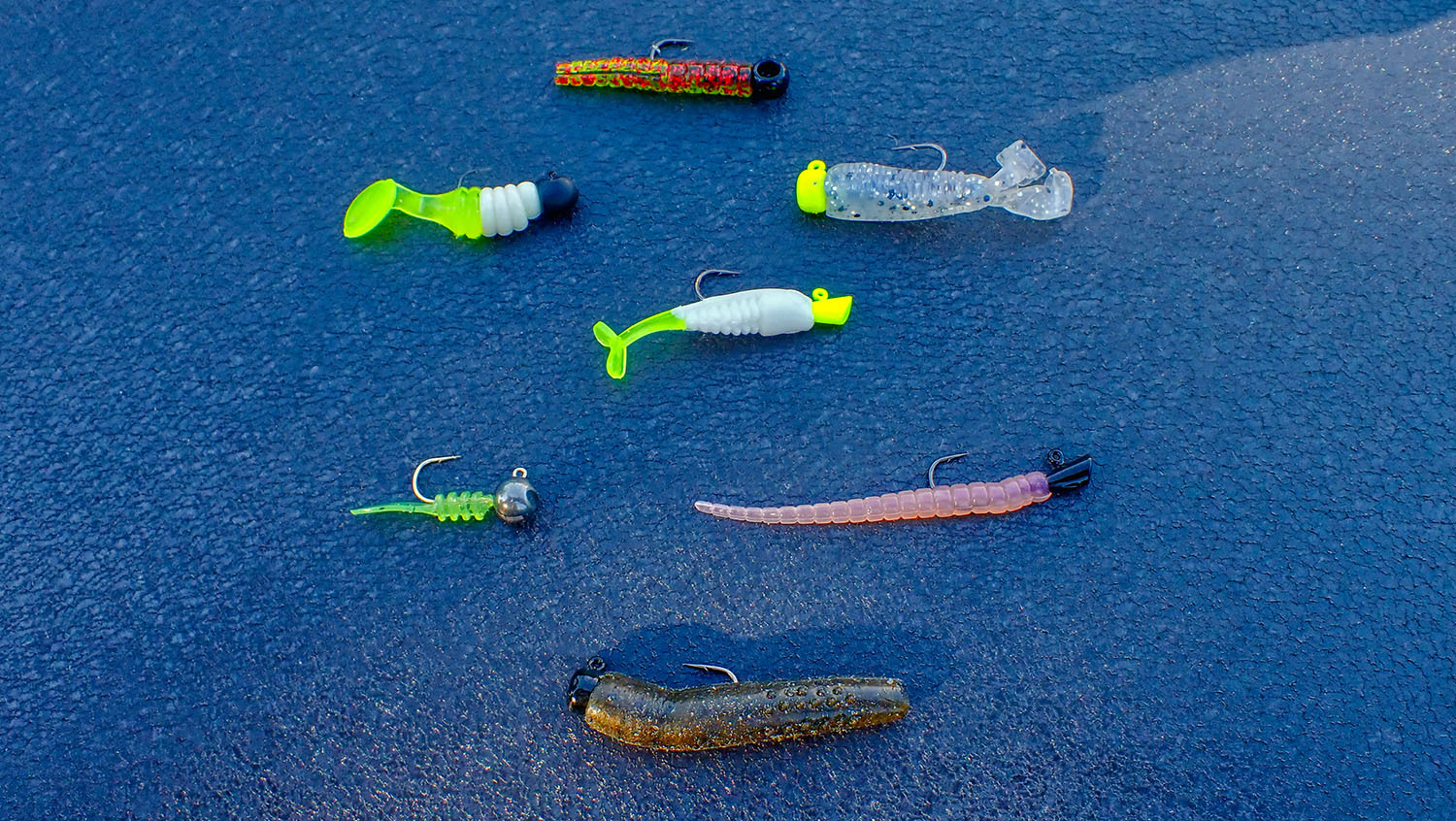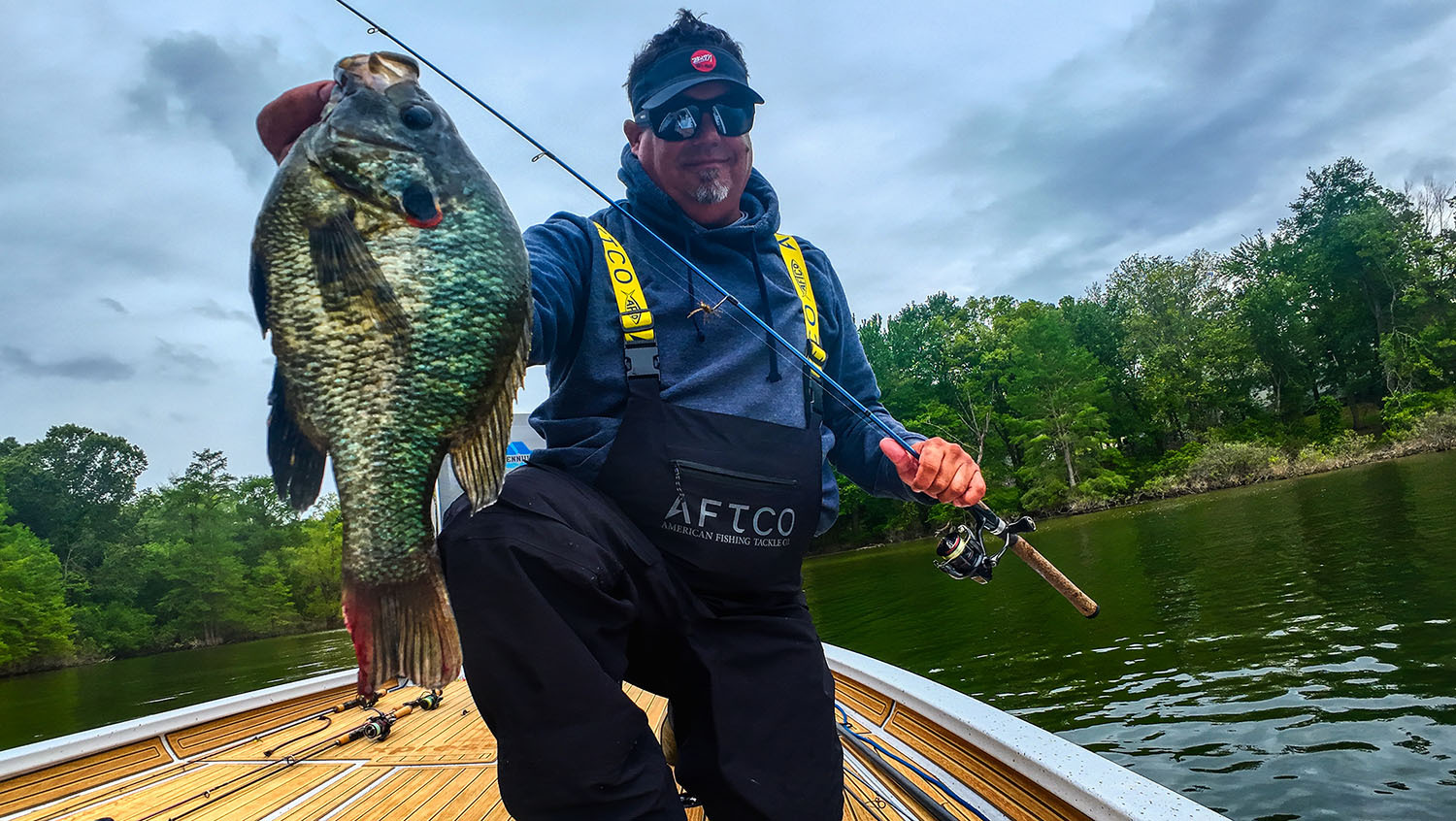Best Bluegill Lures for Year-Round Action
By: Jason Sealock
October 27, 2025
Panfish represent a variety of smaller "pan sized" fish with the most popular being bluegills, but it also includes red ear sunfish, pumpkinseed, and goggle eyes. They provide a fun fish to catch while being plentiful, but they are also great table fare. And while anyone can catch them with simple live baits like earthworms and crickets, catching the better sized bluegills and red ears can be a lot of fun on ultralight lures and tackle. So we thought we'd share some of the best lures for bluegill fishing as well as other panfish to help anglers build a quality panfish kit that is ready to go all the time without having to worry about finding live bait to go fishing. The largest majority of panfish anglers will chase bluegills, so we use bluegill fishing interchangeably with panfishing.
Panfish represent a variety of smaller "pan sized" fish with the most popular being bluegills, but it also includes red ear sunfish, pumpkinseed, and goggle eyes. They provide a fun fish to catch while being plentiful, but they are also great table fare. And while anyone can catch them with simple live baits like earthworms and crickets, catching the better sized bluegills and red ears can be a lot of fun on ultralight lures and tackle.
So we thought we'd share some of the best lures for bluegill fishing as well as other panfish to help anglers build a quality panfish kit that is ready to go all the time without having to worry about finding live bait to go fishing. The largest majority of panfish anglers will chase bluegills, so we use bluegill fishing interchangeably with panfishing.

Table of Contents
Bluegill and Panfish Preferences
Bluegill and other panfish feed on a variety of aquatic food sources. They will eat snails, chironomids, bug larvae, small crawfish and other invertebrates as well as worms, terrestrials like grasshoppers and crickets, and small baitfish. So, with a wide variety of forage base for them to feed on, targeting them can be done with a number of different types of fishing lures.
Anglers often target them when they are feeding shallow and grouping up to spawn in the spring. Typically they like to spawn after the water temps get above 70 degrees, and will make nests in big honeycomb formations with lots of fish spawning right together in a colony setting.
What many anglers don't realize is that they will come shallow again in the fall, and can also be patterned easily in the summer and winter. So if you love to eat bluegill and other panfish, you can actually target them all year.
After they spawn in the spring, they will move out deeper, first relating to cover like stumps and brush piles on places like points and humps leading to deep water. Then they will stay around deep cover and come back shallow in the evenings on bug hatches to feed shallow in windows. They definitely adopt a more nocturnal pattern.
As fall comes with cooler water temps, the fish come back shallow to feed before winter. I find this window to sometimes be better than spring fishing. Just huge groups of fish in shallow, calm pockets sunning and feeding.
As the water gets down below 60 degrees, they will start making their way out to their deep winter holes. I have found this to be deep flats off the main basins or river channels. This can be some of the easiest panfishing of the whole year with jigs. It's more about hunting the big groups with maps or electronics.

Best Jigs For Bluegills and Other Panfish
There are a ton of great finesse plastics on the market these days. A large majority of these are made for crappie fishing, and while some of those baits will work, you'll get a lot more bites and a lot more misses on crappie jigs than jigs scaled down for the much smaller mouths of bluegills and red ears.
The biggest caveat is the actual jighead. Most crappie jigs are built on No. 2 hooks, which are a tad too big for most bluegills until you get close to that 10-inch size. For bluegills you want jigs with hooks in the 6-10 range. While there are not a ton on the market, new introductions are coming continuously now specific for panfish.
Some of the best heads for bluegills and red ear would include the following:
- Eye Hole Tungsten Jig 1/16 ounce Size 8 (coming in November)
- Eurotackle ESR Micro Finesse Tungsten Jig Size 8
- Northland Tungsten Panfish Jig Size 6
- Z-Man Micro Finesse ShroomZ Jig Heads 1/30-1/15 ounce
- Trout Magnet Tungsten Jigheads 1/32 ounce Size 8
- Eye Hole Jigs 1/64 ounce Size 6
As for plastics, while bluegills and red ear will hit crappie plastics and even swallow them, if you will scale down from 2-inch crappie baits and focus more on 1 inch baits, you will land a lot more quality panfish. Some great smaller pint-size options fit the bill here.
Some of the better panfish plastics we have tested include but are not limited to the following:

How To Fish For Bluegill With Jigs
There are several ways to fish these jigs for bluegills and other panfish, but the main premise to understand is motion and working the jigs where the fish are looking to feed. Sometimes that's on the bottom. Sometimes it's on the surface. Sometimes it's simply reacting to an abrupt action where they are.
I often will start with a jig I can steady reel with a tail that undulates or kicks. I will start by casting out and reeling in slowly after a short pause to let the bait sink some. If that doesn't get a bite, I will make another cast and let the bait sink lower or even to the bottom and start a slow steady retrieve just off the bottom.
If that doesn't work, I am going to start imparting a subtle hopping or lift and drop retrieve. Bluegill are notorious for ignoring things that just swim steady but react to things that jump up and fall. Often you can be around them and not catch them until you impart some sort of hop and drop type retrieve to trigger them. They are very impulsive fish, and the big ones are really impulsive and territorial. So often action is better than slow and steady like with crappie fishing.
Now I would caution you not to hop it up 2 or 3 feet. Just make it rise and fall a few inches. Enough to get a fish's attention and react.
Another way to accomplish this is to fish these jigs under a float like the E-Z Panfish Floats. You can steady reel and keep your jigs above cover like grass or wood with a float. But you can also pulse it by pulling it a foot and then letting it settle on a pause. Then pull it again and let it settle. This can be a deadly way to fish for shallow bluegills and red ear, and it's a staple technique in the spring and fall for big red ears and bluegills alike.

Other Bluegill & Panfish Lures
There are also a handful of hard baits and flies that will tempt and catch bluegills, and can sometimes be the most fun way to catch big, aggressive specimens.
On the hard bait side, some of our favorites include the following:
- Rapala Countdown CD1 Minnow
- Yo-Zuri Snap Bean
- Strike King Bitsy Minnow
- Rebel Crickhopper
- Worden's Rooster Tail
If you are into fly fishing, catching bluegills on popping bugs is a hoot and you can catch them on a lot of trout nymphs as well. A Stimulator in size 12 or 14 or a black Wooly bugger in size 10 is hard to beat for catching lots of bluegills when they are shallow. As are do-it-yourself fly patterns like the Gill Getter, Bully Spider and more buggy leg imitations.
Scent Can Help
Tipping your jigs or adding scent pellets to the eye of an Eye Hole jig can get you several more bites when fishing for panfish. They are very scent oriented, so scent additives will only improve your odds when it comes to panfishing.
Some good options include the following.
Conclusion
With some light lines, an ultralight rod and reel setup and a pocket full of jigs you can catch a bunch of quality panfish. The biggest bluegills, red ears, and other panfish I have caught have all come on jigs and other artificial lures. And not having to keep live bait alive and having no mess to clean up makes fishing with the best jigs a much better option.
Bluegill & Panfishing Gear

